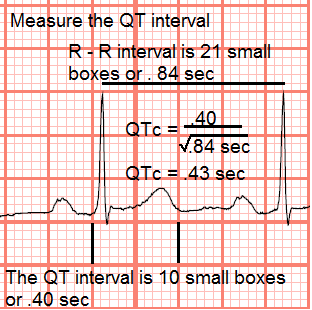

When the U-wave is meticulously studied, it has a duration of 200ms to 350ms and inclusion in the QT-interval would thus result in extreme and erroneous QT values. In fact, there are also no accepted reference values for the QU-interval while often dedicated electrocardiographic techniques are needed before one can really focus on the U-wave. Therefore, it is common practice to measure the QT-interval instead of the QU-interval as a measure of the duration of cardiac repolarization. But as the U-wave is often suppressed by standard ECG filtering or suppressed by the P-wave at faster heart rates, it is often not well recognized on a standard 10 second ECG. However, it is clear that cardiac repolarization is only finished after the end of the U-wave.

The QT-interval implies that the U-wave should not be included in the measurement, as one would then need to determine the QU-interval. The QT-interval you use to enter in the calculator should preferably be determined from the average of 3 consecutive beats. However, sometimes the end of the T-wave can not be easily determined in lead II, and alternatively lead V5, V6 or I can be used. As a consequence of the above-mentioned reasons, the reference values are also determined for lead II. This often results in easily recognizable P, QRS, T and U-waves in lead II, which promotes their measurement.ģ. The vector axis of the P, QRS and TU-wave is predominantly directed infero-lateral and thus in the direction of lead II. In the earliest years of the ECG there were no precordial leads and lead choice was thus confined to the limb leads.Ģ. There are several reasons for this custom:ġ. Historically, measurement of P-QRS-T-intervals is preferably performed in lead II. This is caused by the varying projections on different lead vector axes. The QT-interval is different in different leads (as all ECG parameters are). Part of this text is adapted from Postema and Wilde, The measurement of the QT-interval, Current Cardiology Reviews 2014.


 0 kommentar(er)
0 kommentar(er)
